This week I finished buttoning up Chris’ 1972 2002tii. Her husband, longtime Boston CCA member Jim Zagnafna, was the original owner of what they called “the baby,” and with his passing, I’m helping her sell it. I finished off the punch list of things that had to be completed before the photography and videos, shot those (the walk-through video can be seen here), and got the car submitted to Bring a Trailer.
As I said last week, one of the things I was waiting on was an original carpet piece for the driver’s footwell. When I first saw the car, this piece was missing, and in its place was an ugly piece of black indoor-outdoor carpeting.
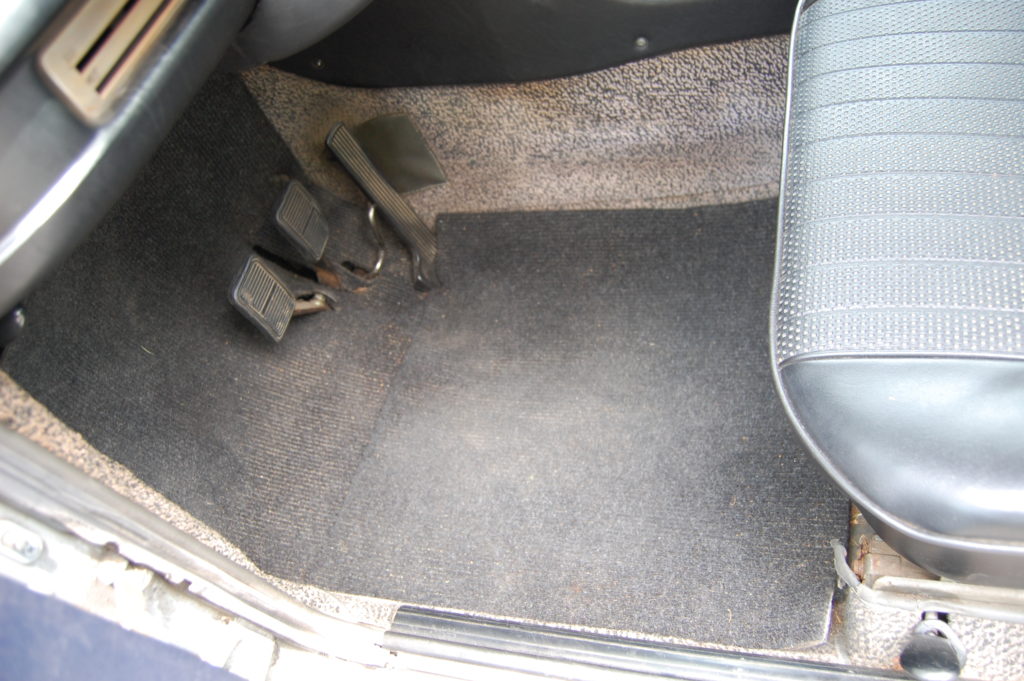
Yuck.
Since I had to replace the clutch master cylinder, I yanked out the errant black rug piece, and when I finished the repair, I left it out in hopes that I could locate an original replacement piece that matched the original salt-and-pepper rug.
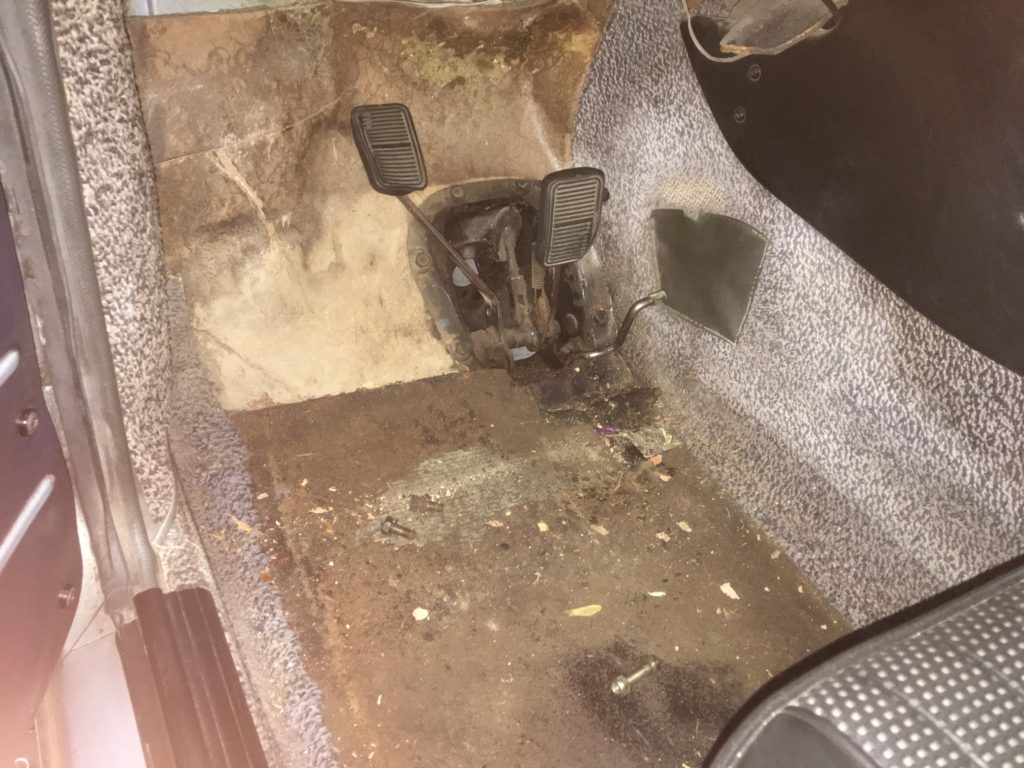
I’ve been waiting… for a rug like you…
Fortunately, as I described last week, several Facebook friends said that they had the piece I needed, but it was John Digrado who laid his hands on one and sent me the pic. It arrived last Monday. It’s as good a match as one could hope for. Thanks, John!
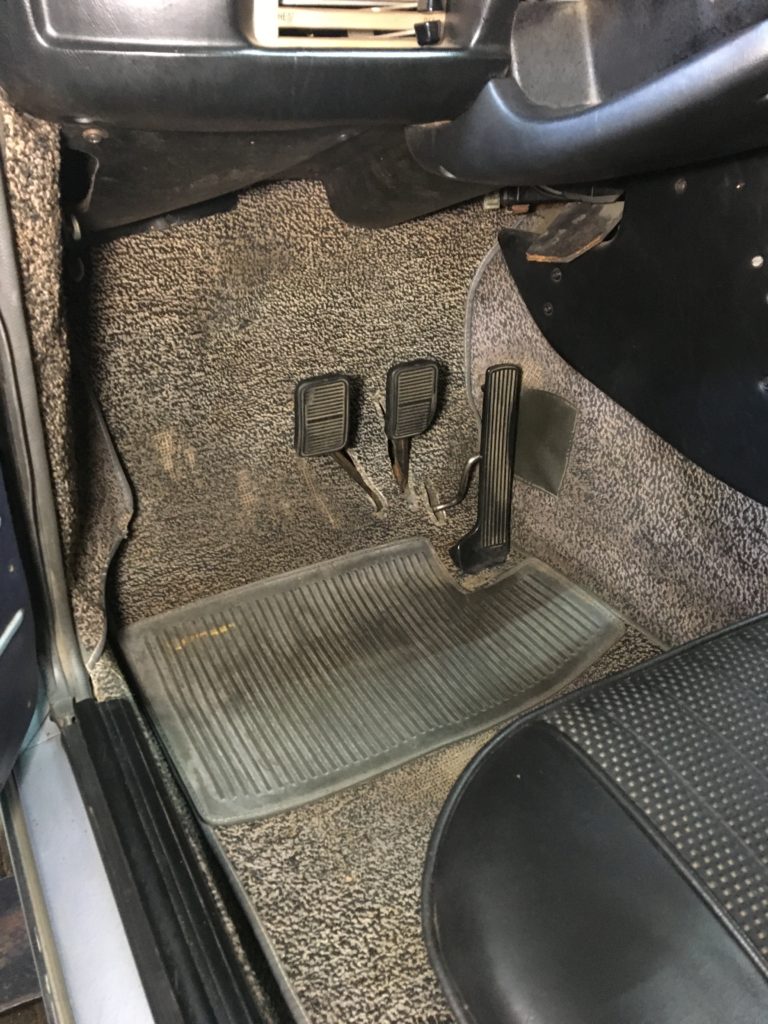
A marriage made in rug heaven.
Next were the wheels and tires. When I first saw the car, it had E30 bottlecaps with eighteen-year-old dry-rotted Pirelli P6000s on them. Fortunately, Chris found the original—and rare—5×13″ steelies in the basement. I gave them a quick cleaning and a coat of paint, and was just waiting for my friend Jay Condrick of BostonMobileTire.com to come to my house and do the in-driveway tire-installation thing. When that was done, the car was transformed from this:

Pretty, but these days caps aren’t cool.
to this:

That’s better.
With the photography and videos done, I submitted everything to BaT. While I was waiting for their decision, I knocked off two more issues.
The first was some odd behavior in the car’s temperature gauge. Even when the car was driven in hot weather, the needle wouldn’t creep out of the blue zone at the bottom of the gauge. I pulled the wire off the temperature sender and grounded it, and the gauge pegged at the top, as it’s supposed to, so there wasn’t anything egregiously wrong with the gauge. Nevertheless, I swapped instrument clusters.
It made no difference.
The odds of it being the sender were slim (I’ve never replaced a bad sender). I supposed it was possible that the thermostat was stuck open, forcing the car to run too cool—unlikely, but not impossible. So I took a spare 75°C thermostat, boiled it on the stove to verify that it opened and closed correctly, and swapped it. This required dumping the coolant, but hell, then I could add “coolant changed” to the car’s list of recent maintenance items.
Unfortunately, that made no difference, either.
I often say that a disclosure list of a car’s foibles really should become a punch list for its repairs, since it’s far better to fix something than to disclose it as a shortcoming, but I really didn’t know what else to do.

Even on the highway at full sail, the temperature needle didn’t leave the blue zone.
Then I thought that maybe there was a grounding issue with the temperature sender. I loosened it to break any corrosion that might have formed at the threads, then screwed it back down: no difference. I ran a wire with alligator clips at both ends from the sender’s nut directly to the battery terminal: no change. I was really at a loss. Even if I was willing to admit the sender might be bad (and I wasn’t), I didn’t have a spare; the other 2002s were all in my storage space on the Massachusetts- Connecticut state line.
Then I remembered that in a wonderful bit of synergy of parts given to me by the widow of one departed 2002 owner helping the car that belongs to another, in the bag of parts I got from the wife of Boston Chapter member John Farlow several years ago, there was a temperature sender. I found it and swapped it for the one in Chris’ car, and the temperature gauge instantly read what it should. I love the big-circle-of-life-even-after-death part of it, but I also love how, whenever I say to myself, “It can’t be that” or “It’s never that” or “I’ve never had to replace one of those,” I need to admit that I have a blind spot. I was glad that I took the five minutes needed to see beyond it.
The last item to address was checking the car’s dwell, which is the electronic measurement of point gap. The gap should be set to 0.016″ (which, famously, is about the thickness of the cardboard in a book of matches), but really, it’s the dwell: the number of degrees out of the engine’s 360° rotation that the points “dwell” together that should be measured.
This requires a dwell meter.
I had to hunt to find my old Heathkit. I haven’t used it in a while, since most of my vintage cars have Pertronix ignitions instead of points and condenser. But I hauled it out, and the dwell read 70 degrees, which is outside the 2002’s 59-to-64-degree spec. This kicked off the old iterative process of pulling off the cap and rotor, tweaking the points gap, putting them back on, and rechecking the measurement. When I looked closely at the points, I could see how badly pitted they were.
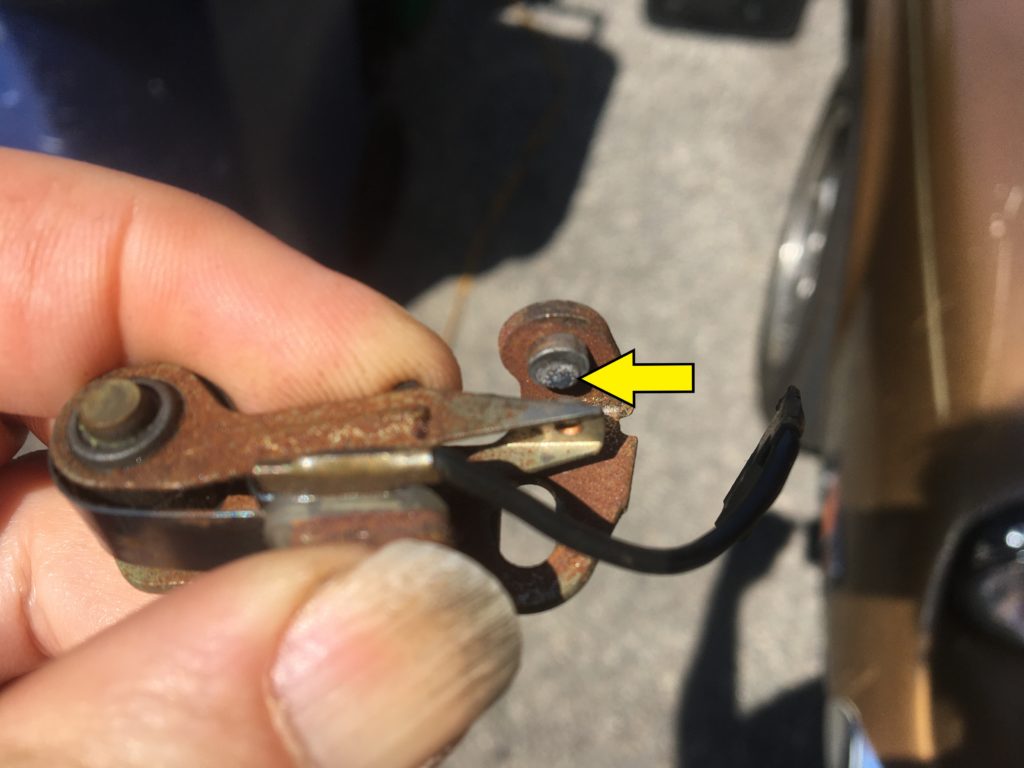
That’s some bad pitting on a set of points that had clearly been in there for a long time.
While I didn’t really feel on the hook to give the car a tune-up when it was running fine, I dropped in the new set of points I keep with me when I road-trip in case the Pertronix fails (spare me the anti-Pertronix rant; you travel with a spare set of points in case the points fail, too).
And then I descended into 45 minutes of vintage-ignition hell. The car wouldn’t restart; something in the Heathkit dwell meter seemed to be interfering with the ignition.
I unclipped it and set the point gap with a feeler gauge and got the car running, but it ran horribly. The old habit used to be to replace the condenser whenever you replaced the points; these days, with the awful quality of ignition components and the high failure rate of new condensers, I re-use condensers unless there’s direct evidence that they’re bad, but when I put in a new condenser, the car began behaving itself again, although it still didn’t like the presence of the dwell meter. I got a dwell reading, saw that it was 63 degrees (within spec), and buttoned things back up.
When I came back upstairs and checked my email, I saw, to my delight, that Bring a Trailer had accepted the car. I called Chris, celebrated the milestone, and talked her through the end game of paper-passing and delivery.
Now we wait for an auction specialist from Bring a Trailer to contact me regarding crafting a description. As I wrote about here, you can’t just write the description and send it to BaT; you have to look at what they craft on the basis of descriptive information you submitted in the application, and work with them if it’s wrong or misleading. You can, however, post your own description as the first comment when the auction goes live, and I have that description at the ready for when that happens.
So I can stop working on “the baby.” I repositioned it in the garage, putting it in the least-accessible spot so I won’t be tempted to drive it. That spot happens to be in the back corner of the garage. So who put Baby in the corner? This guy. Hope Patrick Swayze doesn’t show up and kick my butt.
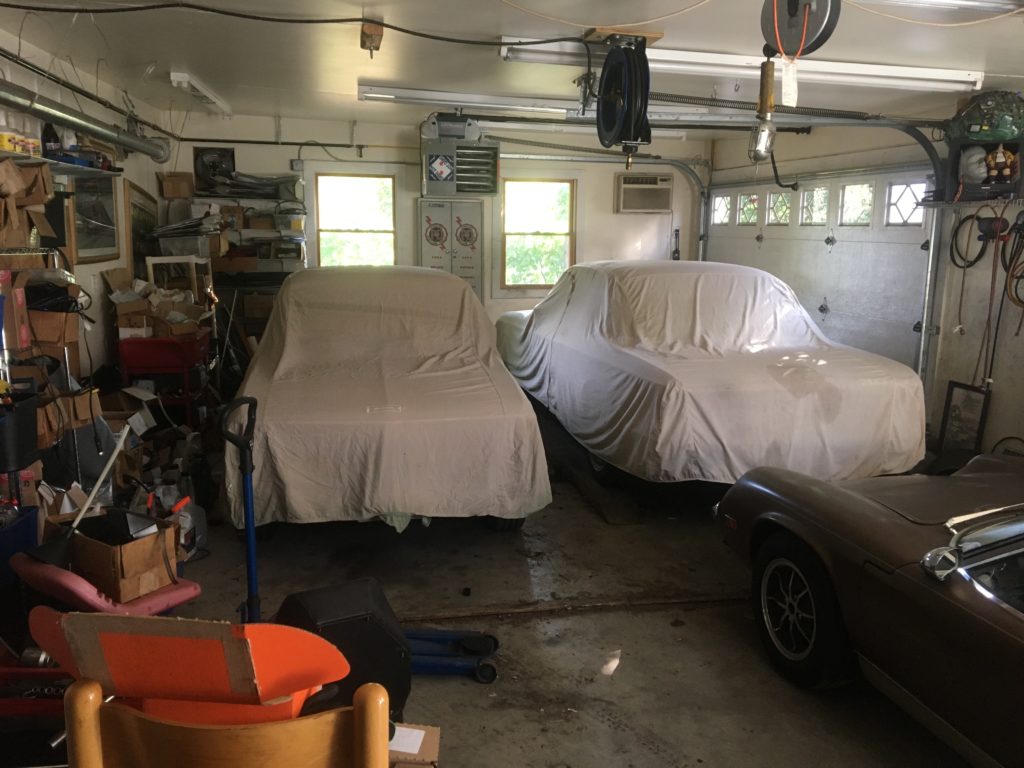
I really did put Baby in the corner.
It’s been my privilege taking this car the last mile, doing my best to clean it up, sort it out a bit, represent it as well as I can, and choose the best clothes out of its closet for it to wear to the job interview. Now all I can do is wait.—Rob Siegel
Rob’s new book, The Best of The Hack Mechanic, is available here on Amazon, as are his seven other books. Signed copies can be ordered directly from Rob here.





















